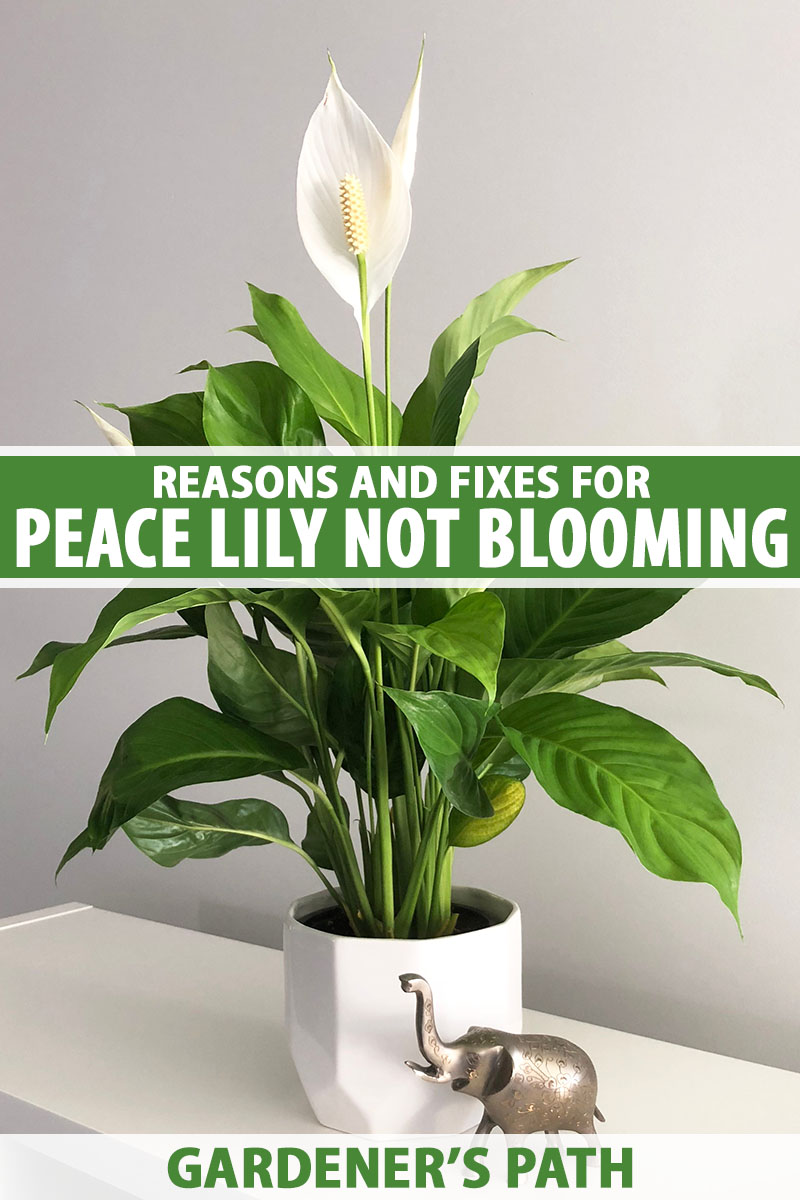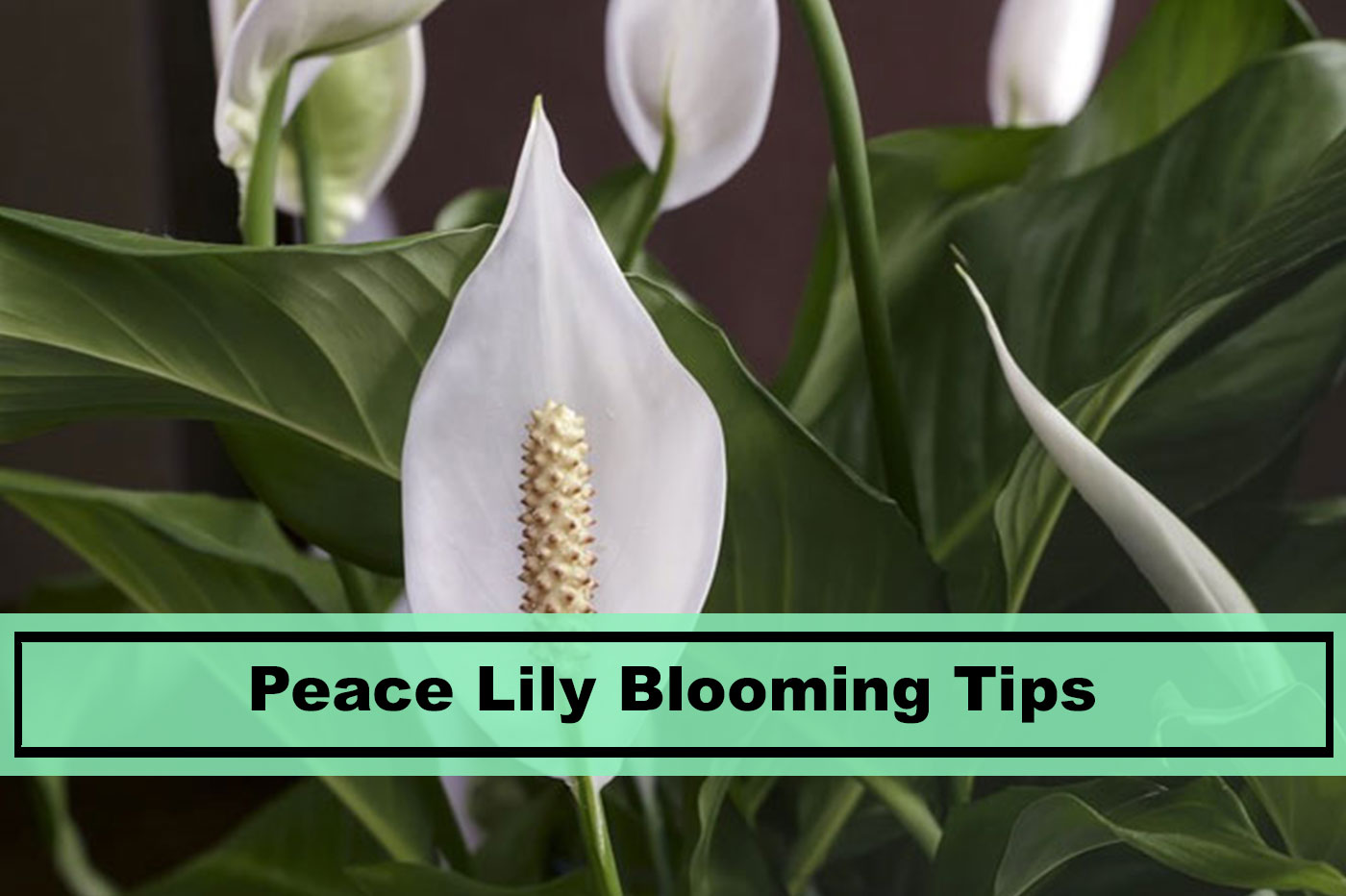To make a Peace Lily bloom, provide bright indirect light and keep the soil consistently moist without overwatering. The Peace Lily, scientifically known as Spathiphyllum, requires these conditions to encourage flowering.
Peace Lilies are popular houseplants known for their elegant white flowers and lush foliage, making them a favorite among plant enthusiasts. If you want to see your Peace Lily bloom, it’s essential to provide the right care. Bright indirect light is crucial for healthy growth and blooming.
Place your Peace Lily near a window where it receives filtered sunlight. Consistently moist soil is necessary, but avoid overwatering to prevent root rot. Keep the soil evenly moist by watering when the top inch of soil feels dry. Misting the leaves occasionally can also increase humidity, promoting flower formation. With proper care, your Peace Lily will reward you with beautiful blooms throughout the year.

Credit: gardenerspath.com
How to Make a Peace Lily Bloom: Step by Step Guide
Choosing The Right Environment
To make a peace lily bloom, selecting the right environment is crucial. When positioning your plant, it’s essential to consider the lighting conditions. Peace lilies prefer indirect sunlight rather than harsh direct sunlight. Placing them near a window that receives filtered or dappled light is ideal.
This allows the plant to thrive without being scorched or receiving too much light. Avoid exposing your peace lily to direct sunlight, as it can lead to leaf burn and hinder blooming. Remember that peace lilies are shade-loving plants, so finding a spot with the right balance of light is key.
Adequate Watering Techniques
To make your peace lily bloom, it is crucial to follow proper watering techniques. One important aspect is to check the moisture level in the soil before watering. This ensures that you do not overwater or underwater the plant. Additionally, it is recommended to use filtered or distilled water, as it eliminates harsh chemicals that may harm the plant.
When watering, make sure to apply water evenly and thoroughly to the entire root ball. Peace lilies also benefit from a regular watering schedule, allowing the soil to dry out slightly between each watering. By adhering to these watering tips, you can encourage your peace lily to bloom beautifully and thrive in its environment.
Appropriate Soil And Fertilizer
To ensure that your peace lily blooms beautifully, start with the right soil and fertilizer. The optimal soil composition should have moisture-retaining properties and be nutrient-rich. This will help the peace lily thrive. When selecting fertilizers, you have the choice between organic and synthetic options.
Both can be effective, but consider the specific needs of your peace lily. Additionally, pay attention to the NPK ratio. This stands for nitrogen, phosphorus, and potassium, which are essential nutrients for plant growth. Finding the right balance will promote healthy blooming.
By providing suitable soil and fertilizer, your peace lily will have the best chance of producing gorgeous blooms. So, take the time to choose the right soil composition and fertilizer for your peace lily’s needs.
Pruning And Propagation Methods
Pruning and propagation methods are vital for making a peace lily bloom. One of the benefits of pruning is removing dead or yellow leaves, allowing the plant to focus on healthy growth. However, it is crucial to use proper techniques to avoid damage while pruning.
When it comes to propagation, division is a common method. This involves separating the plant into smaller sections, each with a portion of roots and leaves. Stem cuttings are another effective propagation technique. Simply cut a healthy stem, remove the lower leaves, and place it in water or moist soil to grow new roots.
By following these methods, you can enhance the growth and blooming potential of your peace lily.
Preventing Common Pests And Diseases
Peace lilies are beautiful plants, and knowing how to make them bloom is essential. When it comes to preventing common pests and diseases, recognizing these issues is crucial. Common pests can be controlled naturally using neem oil or a soap and water spray.
For managing common diseases, it’s important to prevent root rot and treat leaf spots. To prevent root rot, avoid overwatering and ensure proper drainage. If leaf spots appear, treat them promptly to prevent further damage. Taking care of your peace lily involves being attentive to potential issues and using effective, natural methods to keep them at bay.
By following these guidelines, you can enjoy the beauty of a blooming peace lily in your home.
Troubleshooting Common Issues
Troubleshooting common issues with making a Peace Lily bloom involves addressing brown tips and edges of leaves. These are often caused by overwatering or underwatering. To remedy this, adjust the watering routine accordingly. Another issue is wilting or drooping foliage, which can be due to factors such as extreme temperature, improper light levels, or root rot.
Ensure that the plant is placed in an appropriate location and has proper drainage. Additionally, a lack of blooms can be caused by insufficient light, excessive fertilization, or the need for repotting. Assess these factors and make the necessary adjustments.
Finally, yellowing leaves may indicate nutrient deficiencies or too much direct sunlight. Provide the plant with appropriate fertilizer and adjust its exposure to sun. With proper care and attention, the Peace Lily can be encouraged to bloom and thrive.
Importance Of Adequate Humidity
Adequate humidity plays a vital role in making a peace lily bloom. Understanding the plant’s native habitat is crucial for its care. Increasing indoor humidity can be achieved through various methods. One effective way is using humidity trays or misty planters.
These help in creating a suitable environment for the peace lily to thrive. Maintaining the right level of humidity enables the plant to display its beautiful blooms. By mimicking its natural habitat, we can encourage the peace lily to flourish in our homes.
Providing the necessary moisture helps to keep the plant healthy and vibrant. Emphasizing the importance of humidity promotes successful blooming and overall well-being of the peace lily.
Benefits Of Regular Maintenance And Care
Regular maintenance and care are essential for making a peace lily bloom. Cleaning the foliage helps maintain its health. Repotting refreshes the soil and provides necessary nutrients. Ensuring proper air circulation promotes growth and prevents the buildup of pests. By following these steps and taking care of the peace lily, you can enjoy its beautiful blooms throughout the year.
Remember to regularly trim the dead leaves and flowers, as this will help redirect the plant’s energy towards new growth. Additionally, you should avoid overwatering the plant, as peace lilies prefer moist but not soggy soil. With proper care, your peace lily will thrive and reward you with its stunning flowers.
Celebrating Success: Enjoying Blooms
Celebrating success means enjoying the beautiful blooms of a peace lily. Recognizing the signs of upcoming blooms is crucial. Watch for new growth, increased leaf production, and the emergence of flower buds. Extending the blooming period requires proper care and attention.
Ensure your peace lily receives adequate sunlight, water, and nutrients. Maintain a consistent watering schedule, allowing the soil to dry between waterings. Avoid overwatering, as this can lead to root rot. Consider placing the peace lily in a bright, indirect light location to encourage blooming.
Regularly dust the leaves to keep them clean and enable better photosynthesis. With patience and dedication, you can make your peace lily bloom for extended periods, bringing joy and tranquility to your space.
Frequently Asked Questions For How To Make A Peace Lily Bloom
How Often Should I Water My Peace Lily To Make It Bloom?
Water your peace lily when the top inch of soil feels dry. Overwatering can cause root rot, so ensure proper drainage. Aim for a happy medium to encourage blooming.
Can I Use Tap Water To Water My Peace Lily?
Yes, peace lilies are tolerant of tap water, but they prefer distilled or filtered water. If you only have access to tap water, let it sit for 24 hours before watering to allow chlorine to dissipate.
How Much Sunlight Does A Peace Lily Need To Bloom?
Peace lilies thrive in bright, indirect light. Place your plant near a window with filtered sunlight, or provide artificial bright light if direct sunlight isn’t available. Avoid placing it in direct sunlight as it may scorch the leaves.
How Can I Encourage My Peace Lily To Produce More Blooms?
To encourage more blooms, ensure your peace lily is in a pot that is the appropriate size for the plant. Provide it with a balanced liquid fertilizer once every two weeks during the growing season. Remove spent flowers to redirect the plant’s energy towards new blooms.
Conclusion
After following the steps outlined in this guide, you can successfully cultivate a blooming peace lily. Remember to provide adequate light, water, and temperature conditions for your plant. Regularly check the soil moisture and adjust your watering schedule accordingly. Fertilize your peace lily every few months to provide essential nutrients.
Monitor for pests and diseases, taking prompt action if needed. Pruning dead or yellow leaves will not only enhance the health of your plant but also promote blooming. With patience and proper care, you can enjoy a vibrant and flourishing peace lily in your home or office.
The sight of its elegant white blooms will uplift your spirits and bring a sense of tranquility to any space. So go ahead, put these tips into practice, and delight in the beauty of your flourishing peace lily.

